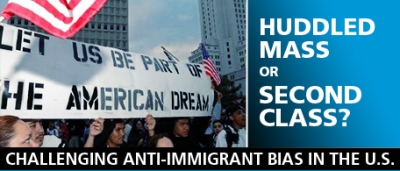by: Mark Onofrio
February 07, 2014
Criticism of immigrant policy is not an excuse to undermine the humanity of others with the kind of vitriol that dominated the internet, especially Twitter, after the Atlanta-based Coca Cola Company aired a commercial with “America the Beautiful,” sung in different languages and featuring a diversity of people during the Super Bowl.
The term immigrant is a descriptor, not a slur. However, it is often used in a pejorative way. For those who are willing to denigrate others because of immigration status, perceived immigration status, or the misguided perception that spoken language relates to immigration status, we need to make one thing clear. Bias and hate have no place in civil society.President John F. Kennedy reminded us in his 1963 acceptance speech for ADL’s America’s Democratic Legacy Award, “The contribution of immigrants can be seen in every aspect of our national life. We see it in religion, in politics, in business, in the arts, in education, and even in athletics, and entertainment. There is no part of our nation that has not been touched by our immigrant background.”
Prejudice is learned and counter speech is an important part of challenging prejudice and bias wherever we see it, including online and in our everyday lives.
Everyone can engage in counter speech by responding when they see bias and challenging misinformation. Unfortunately, instances of racism and xenophobia related to the topic of immigration are common. In addition, educators can play a unique role in addressing bias in society by using the classroom to challenge biased ideals, and in this case, challenging anti-immigrant bias among youth. The lesson plan “Huddled Mass or Second Class: Challenging Anti-Immigrant Bias” for grades 3 to 12 can help educators move our nation closer to a more perfect, less biased nation. Don’t have the time to do a full anti-bias lesson? Familiarize yourself with some myths and facts on immigrants and immigration.










